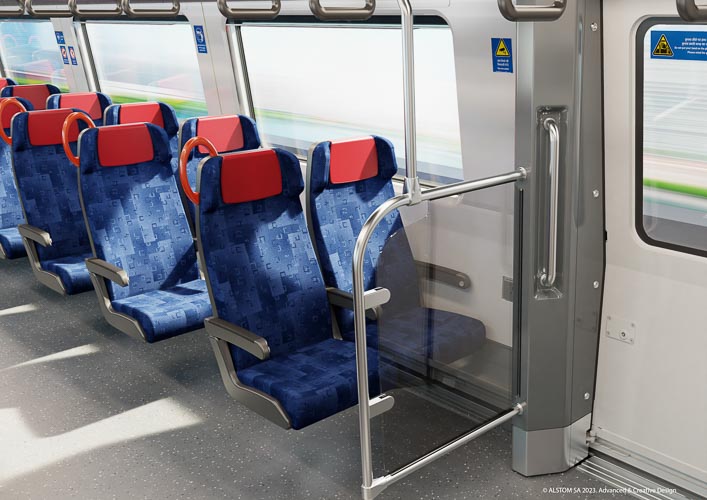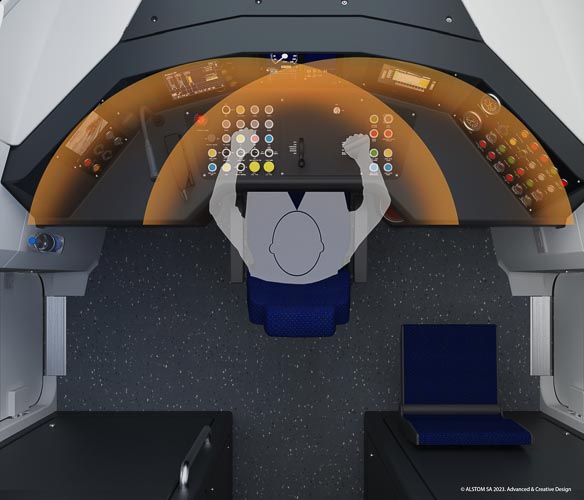Featured IBDA 2023
Transforming Rail Travel: Regional Rapid Transit System Wins India’s Best Design Project Award 2023

Launched in 2022, RRTS is a dedicated, high- speed, high capacity, comfortable commuter service connecting regional nodes; the first of its kind service operating in NCR.
The ambitious RRTS project, awarded to Alstom Transport under India’s ‘Make in India’ initiative, presented a unique challenge: delivering a product of global quality with an Indian supplier base within a remarkably short timeframe. As a pioneering project in India, the goal was to ensure that the Rapid Rail Transit System (RRTS) met international standards while leveraging local resources and expertise.
Tailored Solutions for Modern Rail Travel
To address these challenges, Alstom Transport developed several tailored solutions. The project involved creating various car layouts, including 6-car and 3-car configurations, designed to accommodate multiple speeds and interior layouts based on customer requirements and global railway practices adapted for the Indian context. This flexibility ensures that the RRTS meets both local needs and international quality benchmarks.

Transformative Impact on Regional Connectivity
The RRTS project is set to significantly enhance connectivity across the National Capital Region (NCR) of India. According to the Integrated Transport Plan for NCR 2032, the RRTS will connect eight key corridors from Delhi NCR to neighbouring states. This expanded connectivity will notably reduce travel times for citizens and facilitate the creation of new economic and industrial zones through Transit Oriented Development (TOD). Additionally, the implementation of Phase 1 of the RRTS Delhi-Ghaziabad-Meerut Corridor is expected to remove over 100,000 vehicles from the roads, contributing to a substantial decrease in congestion and pollution around Delhi NCR.
Enhancing Passenger Experience with Modern Design
RRTS trains have been designed to offer an accessible, comfortable, and convenient experience. They feature a two-by-two seating configuration aimed at optimising comfort and passenger flow. The interior design prioritises both physiological and psychological comfort, catering to diverse passenger needs including families, individuals, and specially-abled persons.

Physiological comfort is addressed through a range of design elements such as mixed seating arrangements, a zone concept, and features that ease passenger flow to avoid crowding. Additionally, the trains are equipped with grab handles, overhead luggage racks, designated spaces for vending machines in business class, and easy-to-clean cantilever seats. The design also focuses on psychological comfort, incorporating pleasant curved designs, thoughtful colour and material choices, real-time information displays, USB charging ports for mobile devices, and comprehensive safety and security measures. These elements collectively ensure a comfortable and reassuring travel experience for all passengers.
Through innovative design and strategic planning, Alstom’s RRTS project promises to revolutionise rail travel in India, enhancing connectivity, reducing congestion, and improving passenger comfort across the region.

Credit: Alstom Advance & Creative Design, Asia

